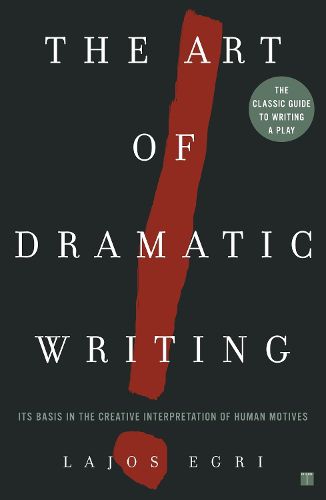Readings Newsletter
Become a Readings Member to make your shopping experience even easier.
Sign in or sign up for free!
You’re not far away from qualifying for FREE standard shipping within Australia
You’ve qualified for FREE standard shipping within Australia
The cart is loading…






Learn the basic techniques every successful playwright knows! Amid the hundreds of how-to books out there, there have been very few which attempted to analyze the mysteries of play construction. Lajos Egri’s classic, The Art of Dramatic Writing, does just that, with instruction that can be applied equally well to a short story, novel, or screenplay.
Examining a play from the inside out, Egri starts with the heart of any drama: its characters. All good dramatic writing hinges on people and their relationships, which serve to move the story forward and give it life, as well as an understanding of human motives-why people act the way that they do. Using examples from everything from William Shakespeare’s Romeo and Juliet to Henrik Ibsen’s A Doll’s House, Egri shows how it is essential for the author to have a basic premise-a thesis, demonstrated in terms of human behavior-and to develop the dramatic conflict on the basis of that behavior.
Using Egri’s ABCs of premise, character, and conflict, The Art of Dramatic Writing is a direct, jargon-free approach to the problem of achieving truth in writing.
$9.00 standard shipping within Australia
FREE standard shipping within Australia for orders over $100.00
Express & International shipping calculated at checkout
Stock availability can be subject to change without notice. We recommend calling the shop or contacting our online team to check availability of low stock items. Please see our Shopping Online page for more details.
Learn the basic techniques every successful playwright knows! Amid the hundreds of how-to books out there, there have been very few which attempted to analyze the mysteries of play construction. Lajos Egri’s classic, The Art of Dramatic Writing, does just that, with instruction that can be applied equally well to a short story, novel, or screenplay.
Examining a play from the inside out, Egri starts with the heart of any drama: its characters. All good dramatic writing hinges on people and their relationships, which serve to move the story forward and give it life, as well as an understanding of human motives-why people act the way that they do. Using examples from everything from William Shakespeare’s Romeo and Juliet to Henrik Ibsen’s A Doll’s House, Egri shows how it is essential for the author to have a basic premise-a thesis, demonstrated in terms of human behavior-and to develop the dramatic conflict on the basis of that behavior.
Using Egri’s ABCs of premise, character, and conflict, The Art of Dramatic Writing is a direct, jargon-free approach to the problem of achieving truth in writing.